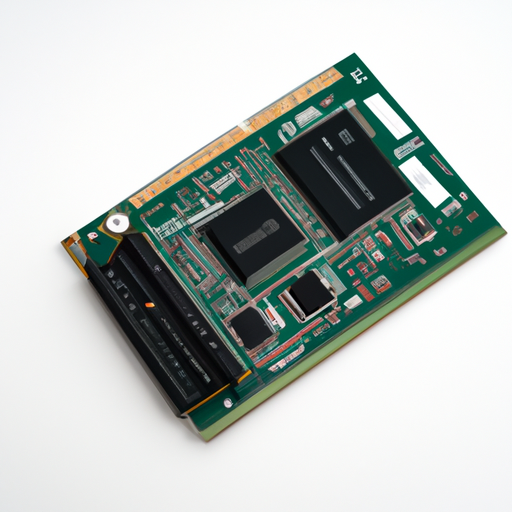Certainly! Here’s a more detailed overview of core functional technologies and application development cases for microcontrollers, microprocessors, and FPGA modules, along with some examples and insights into their effective use in various domains.
Core Functional Technologies
1. Microcontrollers (MCUs)
- **Architecture**: Microcontrollers are typically built on RISC or CISC architectures. Popular families include ARM Cortex-M, AVR, and PIC. The choice of architecture affects performance, power consumption, and ease of programming.
- **Integrated Peripherals**: MCUs often come with built-in peripherals such as:
- **ADC/DAC**: For converting analog signals to digital and vice versa.
- **Timers**: For scheduling tasks and generating precise time delays.
- **Communication Interfaces**: Such as UART, SPI, and I2C for interfacing with other devices.
- **Low Power Modes**: Many MCUs support various low-power modes, making them ideal for battery-operated devices.
- **Development Ecosystem**: Extensive support through development kits, IDEs (Integrated Development Environments), and libraries (e.g., Arduino, STM32 HAL).
2. Microprocessors
- **Performance**: Microprocessors are designed for high-performance applications, capable of running complex operating systems (e.g., Linux, Windows).
- **Multi-core Architecture**: Many modern microprocessors feature multi-core designs, allowing for efficient multitasking and parallel processing.
- **Memory Management**: Advanced memory management features, including support for virtual memory and cache hierarchies, enhance performance.
- **Connectivity Options**: Enhanced connectivity options, including Ethernet, USB, and wireless protocols, facilitate integration into networked environments.
3. FPGA Modules
- **Reconfigurability**: FPGAs can be reprogrammed to perform different tasks, allowing for rapid prototyping and iterative design.
- **Parallel Processing**: FPGAs excel in parallel processing, making them suitable for applications requiring high throughput, such as video processing and real-time data analysis.
- **Custom Hardware Acceleration**: FPGAs can be tailored to accelerate specific algorithms, improving performance in applications like machine learning and digital signal processing.
- **Integration**: FPGAs can be integrated with microcontrollers and microprocessors to create hybrid systems that leverage the strengths of each technology.
Application Development Cases
1. Embedded Systems
- **Home Automation**: Microcontrollers are used in smart home devices (e.g., smart thermostats, lighting systems) to automate and control home environments. For instance, an MCU can adjust heating based on occupancy and time of day.
- **Wearable Devices**: Fitness trackers utilize MCUs to monitor health metrics (heart rate, steps) and communicate with smartphones via Bluetooth.
2. Industrial Automation
- **Process Control**: Microprocessors and FPGAs are employed in industrial settings for real-time control of machinery. An FPGA might manage high-speed motor control, while a microprocessor handles data logging and user interfaces.
- **Predictive Maintenance**: Using MCUs to collect data from sensors on machinery can help predict failures and schedule maintenance, reducing downtime.
3. Automotive Applications
- **ADAS**: FPGAs are used in Advanced Driver Assistance Systems for real-time processing of data from cameras and sensors, enabling features like lane departure warnings and adaptive cruise control.
- **Engine Control Units (ECUs)**: Microcontrollers manage engine performance, optimizing fuel efficiency and emissions based on real-time data.
4. Telecommunications
- **Signal Processing**: FPGAs are widely used in telecommunications for tasks such as encoding/decoding signals, modulation, and demodulation, due to their ability to handle high-speed data streams efficiently.
5. Consumer Electronics
- **Smart TVs and Set-Top Boxes**: Microprocessors in smart TVs run applications and manage user interfaces, while FPGAs can handle video processing tasks, such as upscaling and format conversion.
6. IoT Applications
- **Smart Sensors**: Microcontrollers are integral to IoT devices, collecting data from various sensors (temperature, humidity) and transmitting it to cloud platforms for analysis. For example, a smart weather station can use an MCU to gather data and send it to a cloud service for real-time monitoring.
Conclusion

Microcontrollers, microprocessors, and FPGA modules each have unique strengths that make them suitable for a wide range of applications. Understanding their core technologies and exploring real-world application cases can help developers choose the right solution for their specific needs.
| Technical Journals: IEEE Transactions on Industrial Electronics, Journal of Embedded Systems.Technical Journals: IEEE Transactions on Industrial Electronics, Journal of Embedded Systems. |
| Industry Publications: EDN Network, Electronic Design, and Embedded Systems Engineering.Industry Publications: EDN Network, Electronic Design, and Embedded Systems Engineering. |
| Manufacturer Resources: Application notes and white papers from companies like Microchip, Texas Instruments, Intel, and Xilinx.Manufacturer Resources: Application notes and white papers from companies like Microchip, Texas Instruments, Intel, and Xilinx. |
These resources can provide deeper insights into specific technologies, design methodologies, and innovative applications in the field of embedded systems and hardware development.